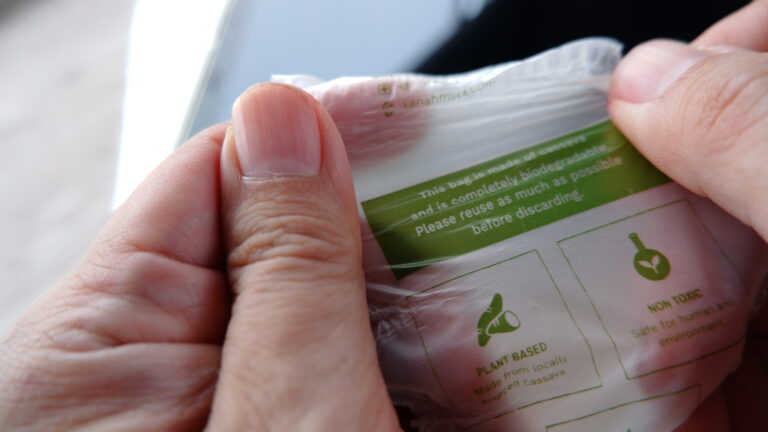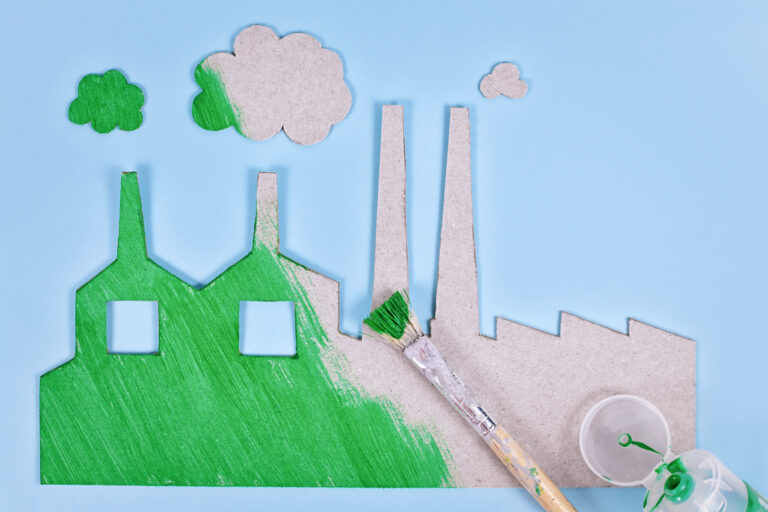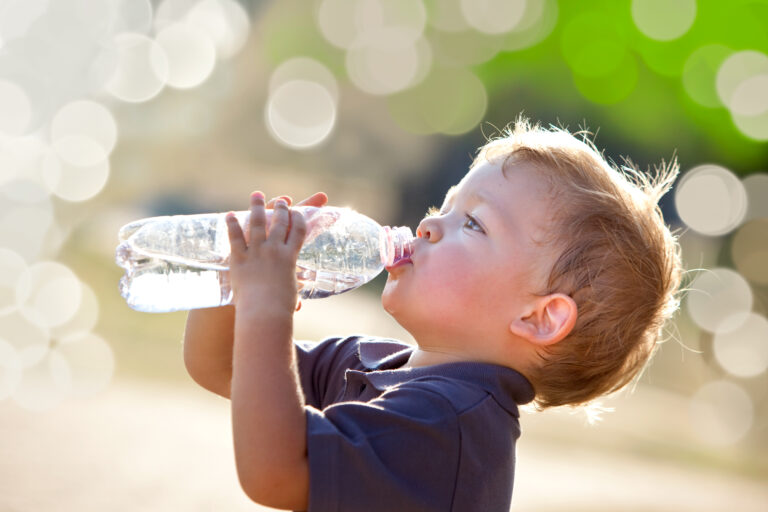
Disclosure: Some of the links in this post are affiliate links, meaning we may earn a small commission if you make a purchase through them.
Why is eating meat bad for the environment? Every day, we choose what to eat without constantly thinking about where our food comes from or its impact on Earth.
The truth can be shocking. Eating meat and dairy products plays a significant role in harming our planet. It’s tied to chopping down forests, adding to air pollution, and hurting nature in other ways.
One key fact is that raising animals for food is one of the main reasons for cutting down forests worldwide. This not only removes homes from wild animals but also contributes to climate change, which affects us all. Each year, approximately 5 million hectares (19,300 square miles) of forest are lost globally, with 95% of this loss happening in tropical regions. Agriculture plays a significant role, accounting for at least three-quarters of this deforestation. Forests are cleared to make way for farming activities like crop cultivation, livestock rearing, and the production of goods such as paper.
Our post will explain how meat production harms our environment and why reducing meat intake could help save it.
Key Takeaways
- Eating meat and dairy hurts the planet by causing deforestation, adding to air pollution, and destroying habitats. This happens because forests are cut down to make room for animals and the plants they eat.
- Industrial meat production releases more greenhouse gases than all cars, trucks, and planes combined. Companies like JBS produce almost as much carbon pollution as big oil firms.
- Cutting down forests for farms leads to fewer trees that can absorb carbon dioxide. This loss makes global warming worse. It also destroys homes for wild animals like jaguars in Brazil.
- Growing crops for animal feed uses harmful pesticides that harm wildlife and pollute water. This practice threatens food safety and clean drinking water.
- Governments must promote plant-based diets and sustainable farming practices to reduce the amount of meat people eat. People can also help by choosing not to use pesticides and supporting local beekeepers.
Impact of Meat and Dairy Industries on the Environment
The meat and dairy industries contribute to deforestation, carbon emissions, loss of biodiversity, and habitat destruction. They also pose risks for human rights abuses and land grabbing in indigenous communities.

Deforestation for industrial meat production
Industrial meat production fuels deforestation, as farmers clear forests to make way for raising livestock and cultivating crops like soybeans. This widespread practice is a leading cause of global deforestation. The primary motive behind clearing these lands is to create space for livestock and to cultivate feed for these animals.
The repercussions of deforestation are profound. They significantly impact our environment and exacerbate climate change. The Amazon rainforest, among other regions, bears the brunt of this destruction, largely due to the demands of industrial meat production.
Moreover, the cultivation of animal feed, such as corn and wheat, further drives deforestation, resulting in the depletion of vital forested areas. Forests play a crucial role in maintaining environmental balance by absorbing carbon dioxide, a greenhouse gas responsible for warming our planet.
Reducing forested areas leads to increased levels of carbon dioxide in the atmosphere, intensifying the effects of global warming. Hence, preserving forests is essential not only for maintaining biodiversity but also for mitigating climate change.
Carbon emissions and climate impact
The clearance of forests for meat production exacerbates another significant issue: global carbon emissions. The meat industry, encompassing beef and dairy cattle farming, significantly contributes to the emission of greenhouse gases into our atmosphere.
JBS, a prominent player in the livestock industry, generates carbon pollution levels comparable to major oil companies like Shell or BP. This revelation often astonishes many individuals as it highlights the substantial impact of meat production on climate change.
The repercussions of these emissions are staggering, akin to the combined pollution output from every car, truck, and plane worldwide. The process of raising animals for food releases more harmful gases than all transportation sectors combined.
Among these gases are methane and nitrous oxide, both of which contribute to trapping heat in our atmosphere. By reducing meat consumption, individuals can significantly decrease their carbon footprint and contribute to the fight against global warming.
A recent study published in Nature Food scrutinized the impact of global food production on our planet. Its findings unveiled that meat production alone accounts for almost 60% of greenhouse gas emissions related to food production worldwide.
Loss of biodiversity and habitat destruction
Industrial farming is a significant contributor to biodiversity loss. It turns diverse habitats into large areas for livestock and crops, driving many species to extinction.
For example, jaguars have lost nearly 38% of their habitat in Brazil because of this change in land use. When forests are replaced with farms or grazing lands, we lose countless plant and animal species that were once part of a rich ecosystem.
This destruction also affects climate crisis efforts by reducing the number of trees available to absorb carbon dioxide, making it harder to fight global warming. Due to shrinking natural spaces, the spread of infectious diseases can increase as animals and humans come into closer contact.
Spread of infectious diseases
The destruction of forests for animal agriculture significantly contributes to the spread of infectious diseases. Three-quarters of new diseases affecting humans originate from animals, making it crucial to address the impact on human health and the environment.
The proximity between wildlife and livestock in these areas increases the likelihood of zoonotic transmission, posing a significant threat to public health globally. Additionally, deforestation for industrial meat production leads to habitat loss, further exacerbating the risk of disease transmission.
In summary, animal agriculture’s deforestation contributes to habitat destruction. It amplifies the likelihood of zoonotic disease transmission, emphasizing the need for sustainable practices that mitigate these risks and protect both environmental and human health.
Human Rights Abuses and Land Grabbing
Indigenous people and traditional communities are directly affected by human rights abuses and land grabbing in the meat and dairy industries. Read more about this critical issue.
Indigenous people and traditional communities at the frontline
Indigenous communities worldwide are at the forefront of defending their land and rights. In Brazil, indigenous groups like the Yanomami and Munduruku face escalating threats from illegal activities on their protected lands. They play a critical role in preserving forests, which are crucial for biodiversity and mitigating climate change.
These communities aren’t just fighting for themselves but safeguarding vital ecosystems that benefit the entire planet. Despite facing severe challenges, they continue to advocate for environmental conservation and human rights.
Illegal operations on protected Indigenous lands
The repercussions of industrial meat and dairy industries reach into illicit operations on protected Indigenous territories. JBS, in particular, has faced scrutiny for its associations with suppliers engaged in such activities. In Brazil, cattle ranches and soy producers are known to benefit from practices like modern-day slavery, encompassing both cattle ranching and soy production.
Environmental Impact of the Global Meat Industry
The industrial meat industry harms the environment by killing wildlife and using toxic pesticides.
Killing of wildlife and use of toxic pesticides
The industrial meat industry is a major contributor to the killing of wildlife, leading to biodiversity loss and habitat destruction. The use of toxic pesticides in animal feed production further exacerbates environmental degradation and threatens the survival of various species.
This widespread practice pollutes ecosystems and endangers the balance of natural habitats, contributing to the decline of many wildlife populations.
By supporting this destructive cycle by purchasing products linked to these activities, consumers inadvertently contribute to the ongoing threat faced by wildlife due to industrial meat production’s impact on their natural environments.
Moreover, the reliance on toxic pesticides perpetuates an unsustainable agricultural model that poses risks for wildlife and broader ecological systems.
Threat to food, water, and medicines
The industrial farming industry severely threatens food, clean water, and medicines. Agricultural practices linked to livestock production lead to water pollution and soil degradation, affecting the availability of safe drinking water and fertile land for crop cultivation.
Furthermore, the excessive use of fertilizers and pesticides in meat production contributes to environmental contaminants that can contaminate food supplies and vital medicines. This jeopardizes global food security and public health by increasing the risk of diseases associated with environmental pollutants.
Government Action and Public Responsibility
Governments should reduce meat consumption, and individuals can protect the environment by making practical choices. To learn more, read on!
Government’s role in reducing consumption
The government can play a critical role in reducing meat and dairy consumption to curb environmental impact. It can also influence consumer behavior by implementing policies and initiatives, such as promoting plant-based diets or taxing animal products.
Collaborating with agricultural entities and industry stakeholders is essential to advocate for sustainable farming practices and reduce livestock production. Furthermore, public awareness campaigns supported by concrete actions will be necessary to achieve the targeted 70% reduction in meat and dairy consumption by 2030 in the UK.
Practical ways to protect the environment
- Cultivating Bee-Friendly Spaces:
- Pollinator Paradise: Create gardens that cater to bees and other vital pollinators, recognizing the crucial role bees play in pollinating our food crops.
- Expanding Habitat: Expand the idea to include planting native trees and shrubs that support a variety of wildlife. Trees serve as habitats, absorb carbon dioxide, and enhance air quality.
- Mindful Choices in Meat and Dairy:
- Meat-Free Mondays: Reduce meat consumption by dedicating one day per week to plant-based meals. By reducing meat consumption just one day per week, you can significantly reduce your carbon footprint.
- Dairy Diversification: Try dairy alternatives such as almond milk, oat milk, or coconut yogurt. These alternatives boast a smaller carbon footprint compared to traditional dairy products.
- Educating and Advocating:
- Be(e) Ambassadors: Check out The American Beekeeping Federation (ABF) serves as the national association representing the beekeeping industry at the federal level. It works to address beekeeping challenges across the United States and maintains strong relationships with state associations. Also find how you can support your local Beekeepers Association.
Remember, each small action contributes!
Conclusion
The meat and dairy industries have a damaging impact on the environment, leading to deforestation, carbon emissions, and habitat destruction. The production of industrial meat is also linked to the spread of infectious diseases and human rights abuses.
Governments must prioritize reducing meat consumption, while individuals should adopt practical methods to safeguard the environment. Embracing plant-based diets holds immense potential in mitigating climate change and conserving biodiversity.
FAQs
Why do scientists say meat production is bad for the Earth? Scientists have found that producing meat, including dairy products and livestock farming, releases greenhouse gases into the air, contributing to global climate change. Also, clearing land for livestock feed and meat production can destroy forests. It is responsible for 11% – 20% of global greenhouse gas emissions and over 30% of global methane emissions.
Can changing my diet help the planet? Yes! Choosing a diet with less meat or none, like vegetarian or vegan diets, can lower your environmental footprint. Eating more vegetables and plant-rich foods needs less land and water and produces fewer harmful gases.
What’s worse: factory farms or grass-fed beef? Factory farms are known for their negative environmental impacts because they produce a lot of animal waste and greenhouse gas emissions in one place. Grass-fed beef might seem better, but it still contributes to problems like deforestation in places like South America.
Does food waste play a role in this issue, too? Absolutely! Wasting food means all the energy used in food production—from growing livestock feed to transporting meat products—gets wasted, too. Reducing food waste is another way to lessen your environmental impact.
Are there health benefits to eating less meat? Studies suggest that cutting down on processed meats can reduce risks of certain diseases such as type 2 diabetes and some cancers linked by research agencies like IARC (International Agency for Research on Cancer). Plus, plant-based diets can support healthy living overall.
How much commercial beef production did the U.S. achieve in 2022? In 2022, the United States commercial beef production amounted to approximately 28.3 billion pounds, marking the highest quantity of beef ever produced in the country.
In 2020, a comparison of 165 countries revealed that the USA led in cattle meat consumption, with 12,535 kt, followed by China and Brazil. Conversely, Belize recorded the lowest consumption with 1.00 kt, along with Seychelles and Liberia at 1.00 kt and 2.00 kt, respectively.
This surge in consumption reflects the increasing global demand for cattle meat. Overall, global cattle meat consumption in 2020, according to Faostat, reached 70,438 kt. This marked a 1.3% increase from the previous year and an 8.46% increase compared to a decade ago.
This post is about answering the question: Why is Eating Meat Bad for the Environment?






